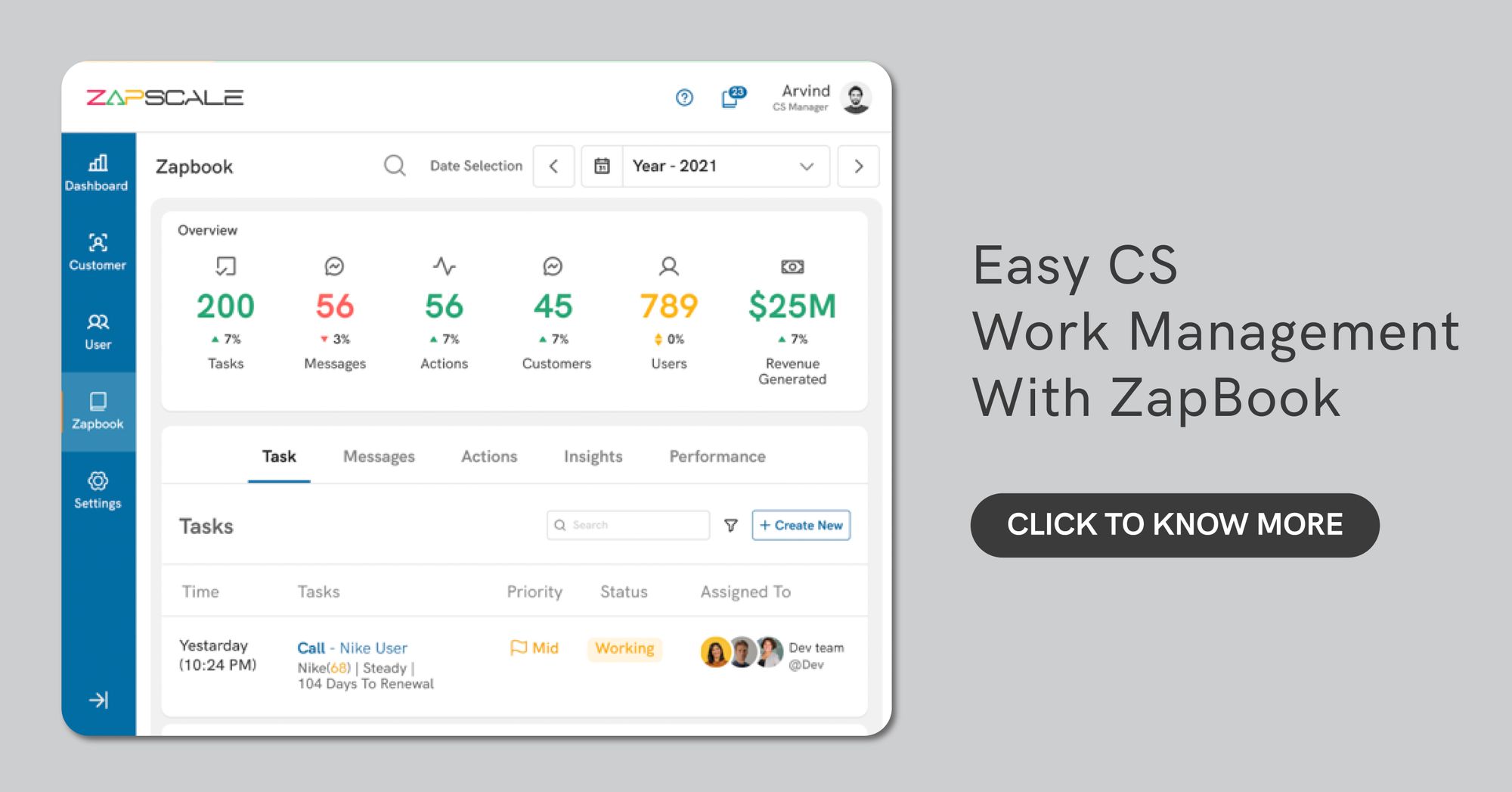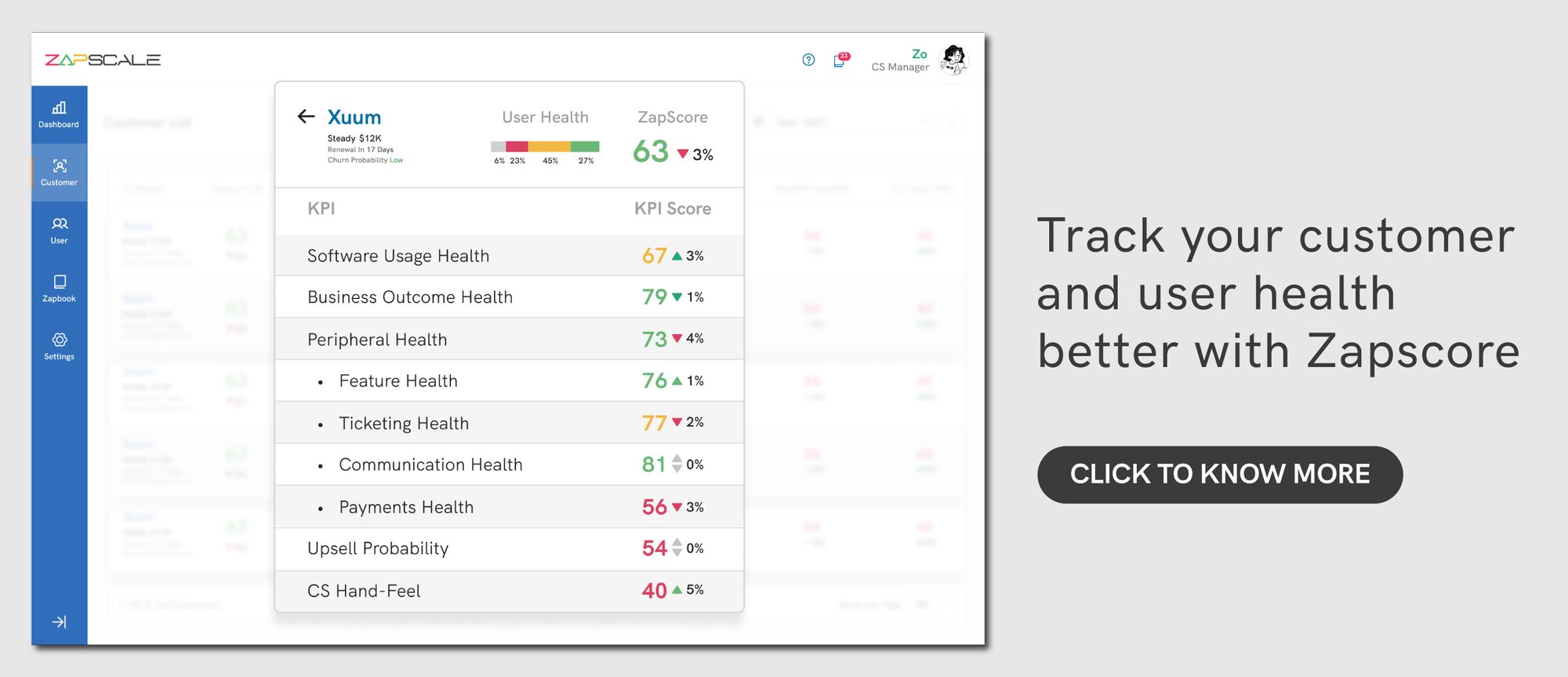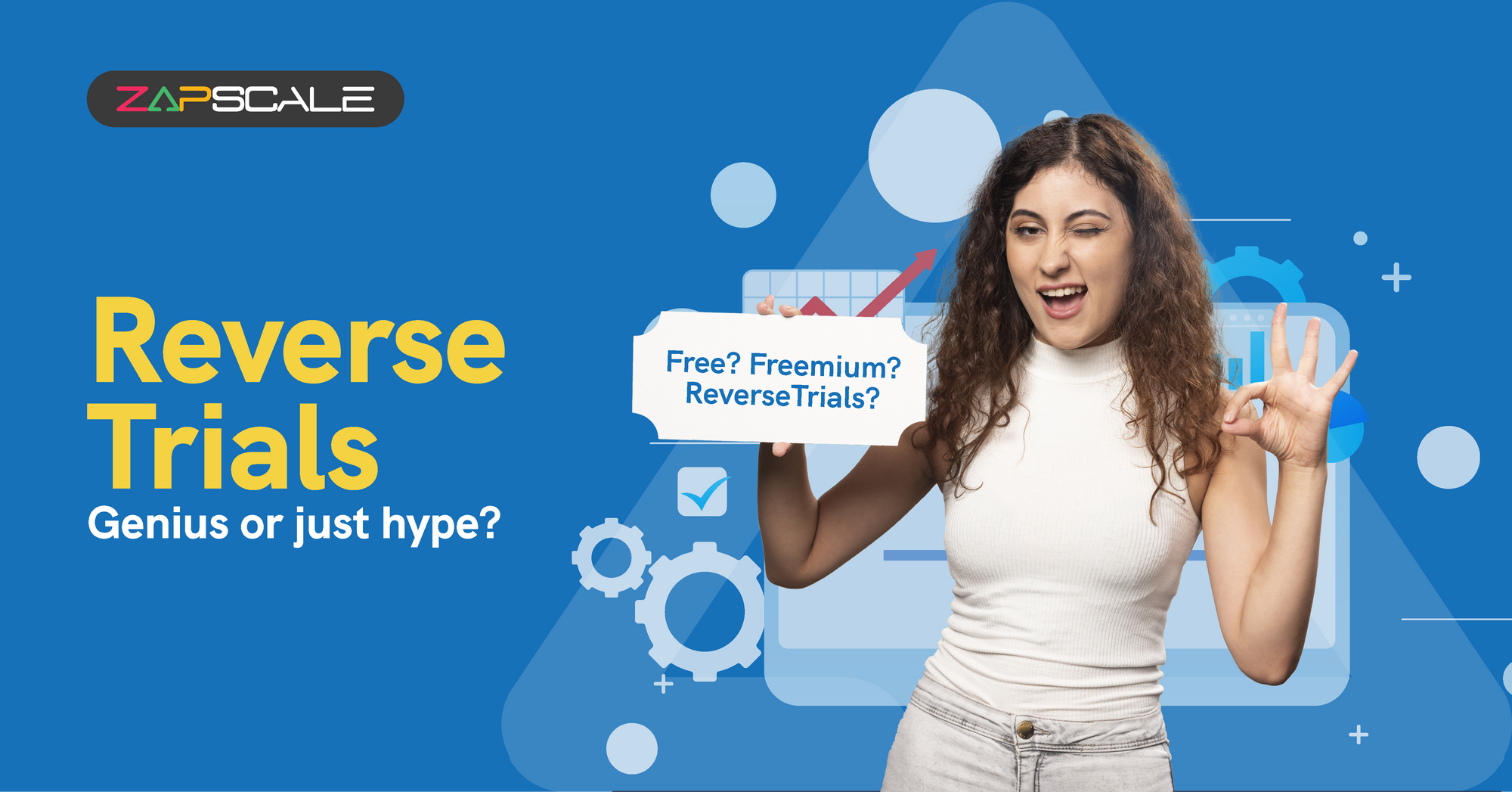CATEGORY > Customer Success Management
5 Productivity Tips For Ridiculously Busy Customer Success Managers

Are you a Customer Success Manager (CSM) with a packed schedule and seemingly endless tasks to tackle? From my perspective, being a CSM presents itself as an incredibly demanding yet deeply rewarding position. Challenging because there’s not a single day that goes without new learning, and fulfilling because you truly love solving problems and get to do it for your customers every single day, more often than not!
You know, not every day is rainbows and unicorns in the life of a CSM. Sometimes things can get pretty overwhelming. Picture this: you're juggling multiple accounts, deadlines are looming, and the client deliverables aren't ready yet. So you find yourself hopping on calls just to ask for a little more time. On top of that, the product team isn't quite ready with the answers you need. It's like a never-ending whirlwind! And let's be honest, if this keeps up, burnout becomes a real possibility — and sooner than you'd like!
How Do You Succeed As A Customer Success Manager?
1. Understand Your Customers
Know Their Goals
Understand what success looks like for each customer and align your efforts to help them achieve it.
Personalize Interactions
Tailor your communication and support based on the unique needs and preferences of your customers.
2. Build strong relationships
Be Proactive
Regularly check in with customers, even when things are going well, to show that you are genuinely invested in their success.
Be Empathetic
Show genuine care and concern for your customers’ challenges and achievements.
3. Communicate effectively
Listen Carefully
Pay close attention to what your customers are saying and ask clarifying questions to fully understand their challenges and needs.
Be Clear And Concise
Straightforwardly provide information, avoiding jargon and complex language.
4. Leverage technology
Use A Customer Success Platform (CSP)
Leverage a Customer Success platform(CSP) to manage interactions, monitor health scores, and utilize predictive analytics for proactive customer engagement and retention strategies.

Utilize Analytics
Analyze customer data to identify trends, measure success, and make data-driven decisions.
5. Provide excellent support
Be Responsive
Address customer inquiries and issues promptly to show that their concerns are a top priority.
Offer Solutions
Rather than just addressing symptoms, work to solve the root cause of any problem customers face.
So, let us see a few strategies to make the most of our days in order to boost our productivity and also plan our weeks better:
Tip 1: Prioritize & Delegate
Take charge of your day and don't let it take control of you! As a Customer Success Manager, it's easy to get caught up in the whirlwind of tasks and responsibilities. However, it's essential to remember that you should be the one driving your day, not the other way around. It's tempting to dive headfirst into every task that comes your way, swiftly finding solutions and closing them out.
However, it is of immense help if we plan ahead and not get distracted by things that come along - of course, you address them, but based on how YOU HAVE PLANNED YOUR DAY and not leave it to what comes along!
In addition, it's essential to minimize repetitive tasks and establish streamlined processes to optimize efficiency. By centralizing these tasks or finding ways to reduce the time they consume, you can free up valuable resources for more strategic and impactful activities. Achieving this requires effective team collaboration and regular process check-ins, allowing for continuous improvement based on valuable feedback from your team.
Tip 2: Utilize Productivity Tools
This is a no-brainer and something we cannot ignore to ensure we make the most of our day. Knowing what tools to use, when, and for what is critical for you to maximize your efficiency:
Decide on a single mode of communication
Here’s a handy tip - choose a primary mode of communication that works best for both you and your customers. Whether it's email, phone calls, Slack messages, or chat, finding that sweet spot can make a world of difference. This decision helps you align your efforts more effectively, both internally and externally. When you know which direction to steer your focus, you can streamline your communication and minimize any potential slips or information leakage.
Being on top of your communication game is absolutely vital as a CSM. You want to ensure that no important piece of information gets missed in the relay between clients and your internal team, or vice versa.
To-Do Lists
When it comes to managing your to-do lists, there are some fantastic tools available to help you stay organized and track your progress. Google Tasks and Slack's "Remind Me Later" feature are excellent options but feel free to explore others that suit your preferences. The key is to find a tool that provides visibility into your daily accomplishments and lets you experience the satisfying feeling of striking items off your list.

Familiarise yourself with internal tools that are applicable to your organization
Tools like HubSpot (to manage renewals/upsell opportunities), Trello (to track feature requests and ensure cross-functional collaboration), and MIRO/Loom/Trainn (to depict process flows to ensure an effective onboarding and training experience) can help you to manage and monitor your book of business in an optimum way.
Customer Health Score
The customer health score is determined by the success metrics that you and your customer establish together. By utilizing a tool that provides an overview of this score, you can supercharge your planning activities. It allows you to be proactive and prioritize the necessary actions to engage effectively with the customer and the core user. This can involve a range of activities, such as weekly cadence calls, executive business reviews, discovery sessions, and more. With this tool at your disposal, you can stay on track, focus on what needs to be done, and foster valuable customer interactions.
From Product Usage and Use-Case outcomes to Ticketing, Email, Payment app data, and even Upsell metrics, ZapScale covers it all. By leveraging these comprehensive KPIs, you can build a ZapScore that serves as a reliable indicator of customer health.

Tip 3: Set Clear Goals and Milestones
Start your user onboarding journey by setting up discovery calls and aligning with what success means to your customer. This could be reducing time for an existing process, enhancing collaboration within the organization, setting up effective reporting mechanisms, or simply put, adopting technology to better an existing process.
Watch our latest podcast where Customer Onboarding Expert Clay Telfer talks about ‘How to drive a customer-centric onboarding’
- At the start - have an onboarding plan and stick to it. Review and revise as required.
- In the middle - have weekly cadence calls to ensure there are no deviations and success metrics are adhered to.
- At the end (which is not really the end and just the beginning) - have quarterly business reviews and check-ins to share key insights and re-align as required, based on the need of the hour.
Tip 4: Build an accessible knowledge base
Foster an easily accessible and user-friendly knowledge base where all support and product resources are readily available for users to navigate and maximize their adoption experience. Often, valuable time is wasted searching for the right training video or reaching out to support for ongoing troubleshooting queries. This disrupts the flow of your day and hampers productivity.
By establishing a robust help center, knowledge base, and efficient support team, you can eliminate these distractions. Users can effortlessly find the information they need, empowering them to independently resolve issues and make the most of the resources at their disposal.
Tip 5: Practice Time Blocking and Batch Processing
Here’s an example of what a good day could look like (barring the ‘save the day’ calls and ‘at the earliest’ asks, of course!)
- Start the day by responding to customer emails and adding them to your to-do lists.
- Prep for the calls that are aligned - do you have all the answers the customer is looking for? Are you prepared if it is a training session? Have you looped in the desired stakeholders if they need to be present?
- Set a standard turnaround time for yourself to respond to your customers - a good practice is to ensure there is a touchpoint or an acknowledgment for all communication received from external parties before 4 PM to be responded to the same day and anything after 11 AM the following day. This helps keep your mind at ease and also slot time for other activities that could include:
A. Preparing SOPs and assisting customers to roll out the tool internally
B. Addressing troubleshooting queries
C. Ad-hoc internal calls to solve critical tasks that do actually need immediate attention
D. Relationship-building time with your customers - you don’t always have to talk work. I have been lucky to have formed some lifelong connections through my professional stints only because we spoke about how difficult it was for them to keep their kids entertained and how I managed to discover new variations of my favorite matcha drink!
In conclusion, it's important to acknowledge that there will be days when you may feel like your efforts aren't enough. During those times, remember to pause, take a deep breath, and keep moving forward. It's worth noting that these challenging days often lead to the rewarding outcome of a satisfied customer, even if they don't explicitly express their gratitude.
Behind that big smile lies a deep sense of appreciation for the valuable work you do. So, stay resilient, embrace the ups and downs, and know that your efforts are truly making a difference.
FAQs
1. What are the primary responsibilities of a customer success manager?
A customer success manager is responsible for ensuring that customers achieve their desired outcomes while using a company’s products and services. Key responsibilities include onboarding new customers, providing ongoing support and training, managing relationships with customers, collecting and analyzing customer feedback, and driving product adoption and renewals.
2. How does a customer success manager measure success?
Customer success managers measure success through key performing indicators (KPIs) such as customer retention rates, Net Promoter Score (NPS), Customer satisfaction score, and the number of upsell and renewals achieved.
3. How does a customer success manager contribute to a company’s growth?
A customer success manager contributes to the company’s growth by ensuring customer satisfaction and loyalty. This leads to customer retention, positive word-of-mouth referrals, and higher revenue through renewals and upsells. CSMs also provide valuable feedback to improve the product and services, which improves the overall customer experience.
ABOUT THE AUTHOR
Popular from Customer Success Management
Quality Content,
Straight To Your Inbox!
Subscribe for the latest blogs, podcasts, webinars, and events!

Write a Blog
If you have experience in CS and
a flair for writing, we’d love to
feature you.
Write to us on
hello@zapscale.com





